Introduction
Printout obtained for normal and forced breathing.
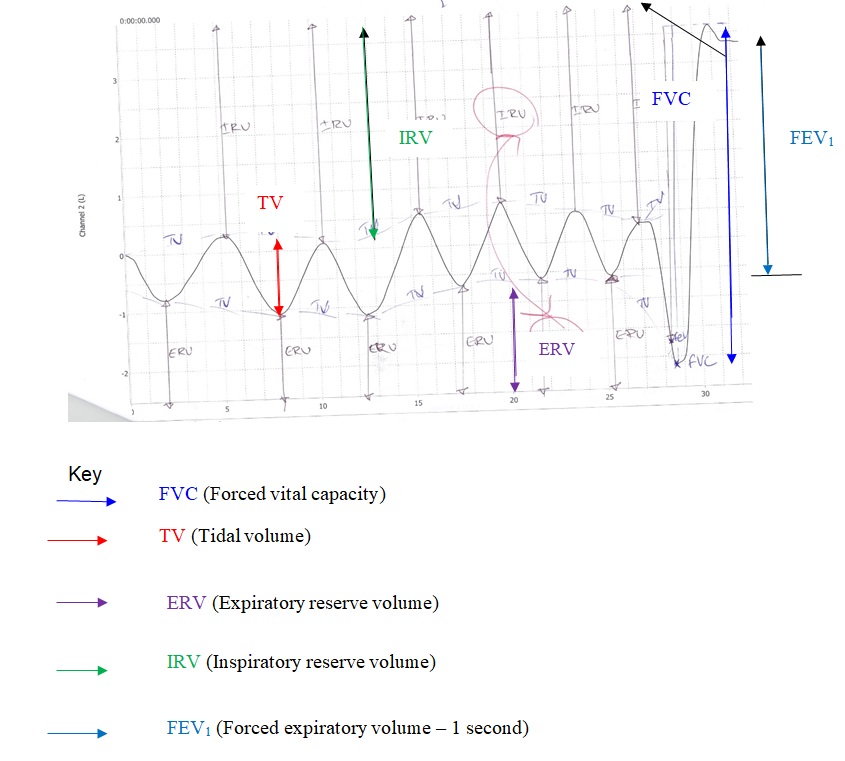
Calculation of the FEV1 /FVC ratio (FER – forced expiratory ratio)
FEV1 = (0.6 + 3.6) = 4.2
FVC = (2.6 + 3.6) = 6.2
Therefore FEV1 /FVC ratio = 4.2: 6.2
= 4.2/6.2
= 0.6774
=67.74%
Both the forced vital capacity (FVC) and the Forced expiratory volume (FEV) were used to evaluate whether the experimental results were within the normal range. Based on these parameters, our results showed a slight deviation from norm as discussed below.
The FVC (forced vital capacity) provides the capacity of the volume of the lungs; the units of FVC are given in liters. The FVC corresponds to the total quantity of the air that is found in lungs, which can be breathed out in any deep inhalation. The FEV1/ FVC ratio in our result was 4.2/6.2 implying that the individual was only able to breath out 67.74% of the total air they inhaled in one second. In normal scenario, the FEV1/ FVC ratio is normally 4/5 meaning that the individuals are able to breath out up to 80% of the inhaled air in their lungs (Ronald et al. 2008, p. 173).
Our experimental results indicated moderate deviation from the normal 70% – 80% expected of normal individuals. Any deviations always results to either obstructive or destructive lung diseases. Obstructive lung diseases are defined as FEV1/ FVC ratio that is less than 70% as in our experimental result. Common Lung conditions associated with airway obstruction are Emphysema, Asthma, Bronchitis and COPD (Chronic obstructive pulmonary disease). Sometimes Cystic fibrosis is also included in the list (Ronald et al. 2008, p. 189).
Restrictive conditions are given by the FEV1/ FVC ratio that is more than 80%. Restrictive lung diseases, also known as restrictive ventilator defects, are known to restrict lung expansion as the name implies. It consequently leads to reduced lung volumes, increased breathing work and inadequate oxygenation or ventilation. The most common non restrictive lung diseases are, hypersensitivity pneumonitis, which is due to allergic reactions, Radiation fibrosis that normally results from cancer treatment radiation, Asbestosis originating from long exposure to Asbestos dusts.
Explanation of why additional dead space causes subjects to take bigger breaths in when respiratory transducer is included in experiment
Dead space refers to the air that the body inhales but do not take place in the gas exchange. The anatomical dead space refers to the gas in areas such as the mouth and the trachea, where the air is not in direct contact with the alveoli and therefore lack of active respiratory surface. The subjects have to increase breath to fill the gaps that do not form active respiratory surfaces (a compensation mechanism).
Causes of the differences in air expired and inspired
There are differences in the expired and inspired air volumes when measurements are made severally, as witnessed in the downwards drifts of channel 2. The difference is due to two main factors, the body temperature that warm up the expired air and subsequently leading to increased volumes. Another factor is due to the water (moisture) that accompanies the air breathed out.
Interpretation of the Flow Volume Loop
Spirometry is commonly used for the measurements for the volumes of air inhaled or exhaled. The tool is vital in creating Pneumatographs which are used in assessing medical conditions like asthma (Fishman et al. 2008, p. 123).
Raw Results
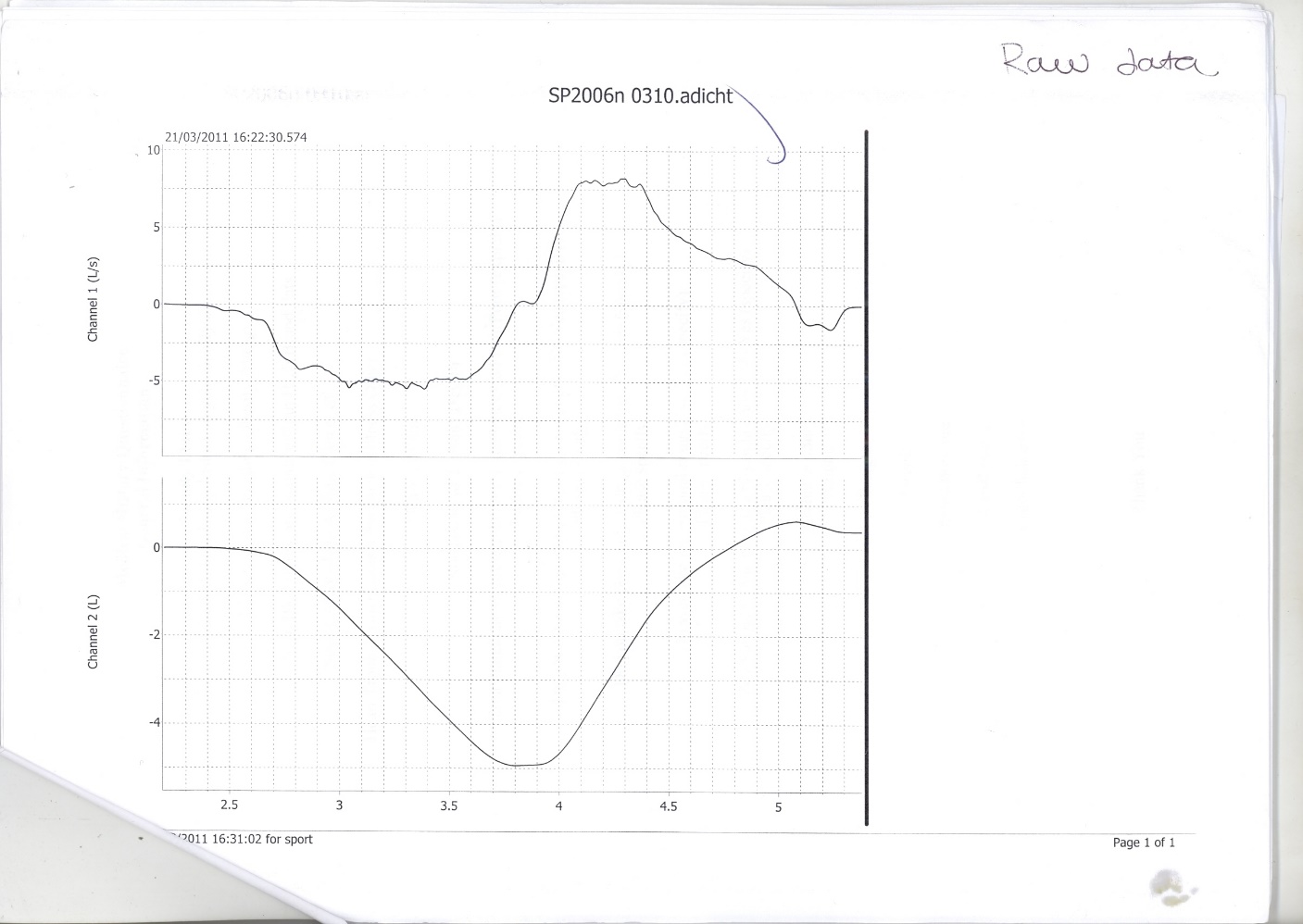
Pneumatograph of the experiment
Y-axis
Flow (L/s)
Volume (L)
FVC (Forced vital capacity)
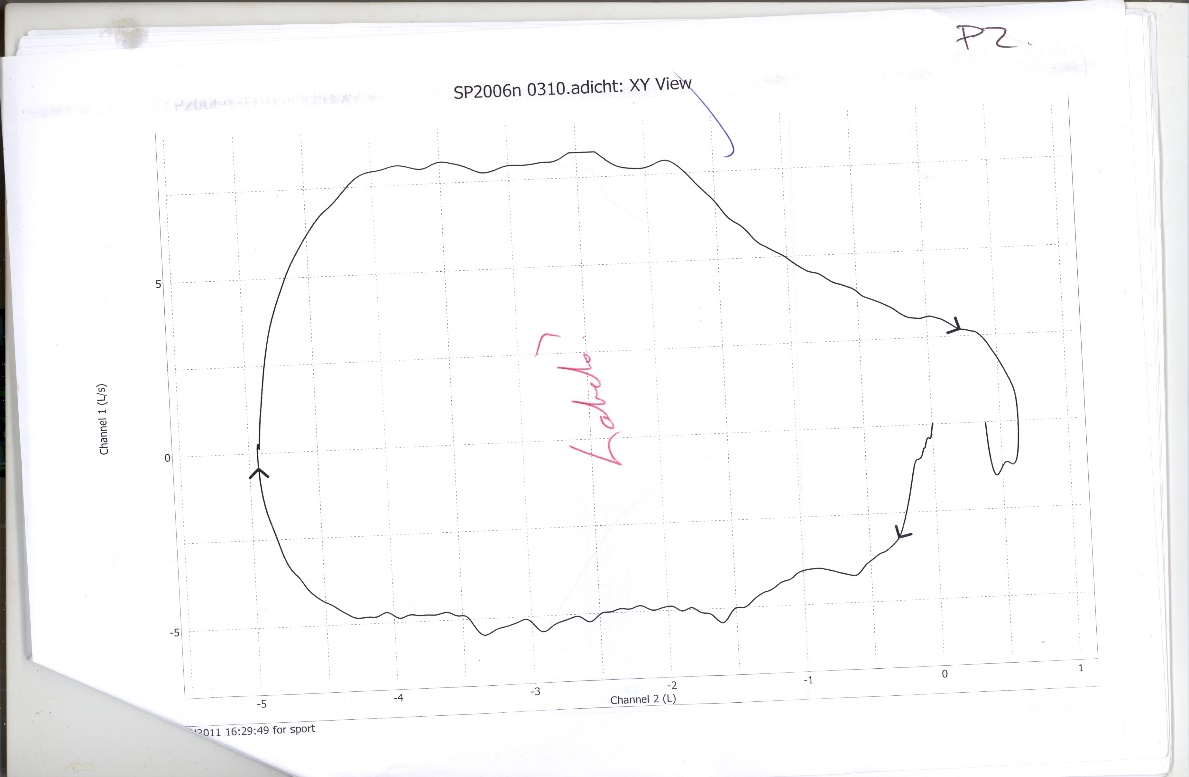
A normal flow volume loop appears as shown in the diagram below
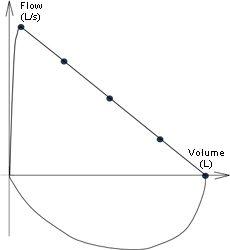
Patients having obstructive lung disease have small airways partially blocked due to pathological circumstances, this patients having obstructive lung diseases have a concave flow-volume loop as in our experimental results above, a typical concave flow loop looks appears as the one on the diagram below (Fishman et al. 2008, p. 423).
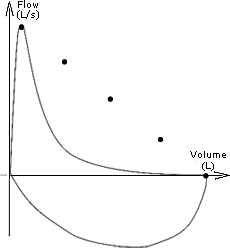
Restrictive lung disease implies low total lung volume in the restrictive case have a flow-volume loop that appears normal since it is not possible to diagnose the total lung volumes.
References
Fishman, A, Elias, J, Fishman, J, Grippi, M, Senior, R, & Pack, A. 2008, Fishman’s Pulmonary Diseases and Disorders. U.S.A. McGraw-Hill Professional.
Ronald, BG, Richard WL, Michael, AM, & Richard AM, 2006, Chest Medicine: Essentials of Pulmonary and Critical Care Medicine. Lippincott Williams & Wilkins. ISBN-13: 978-0781752732.